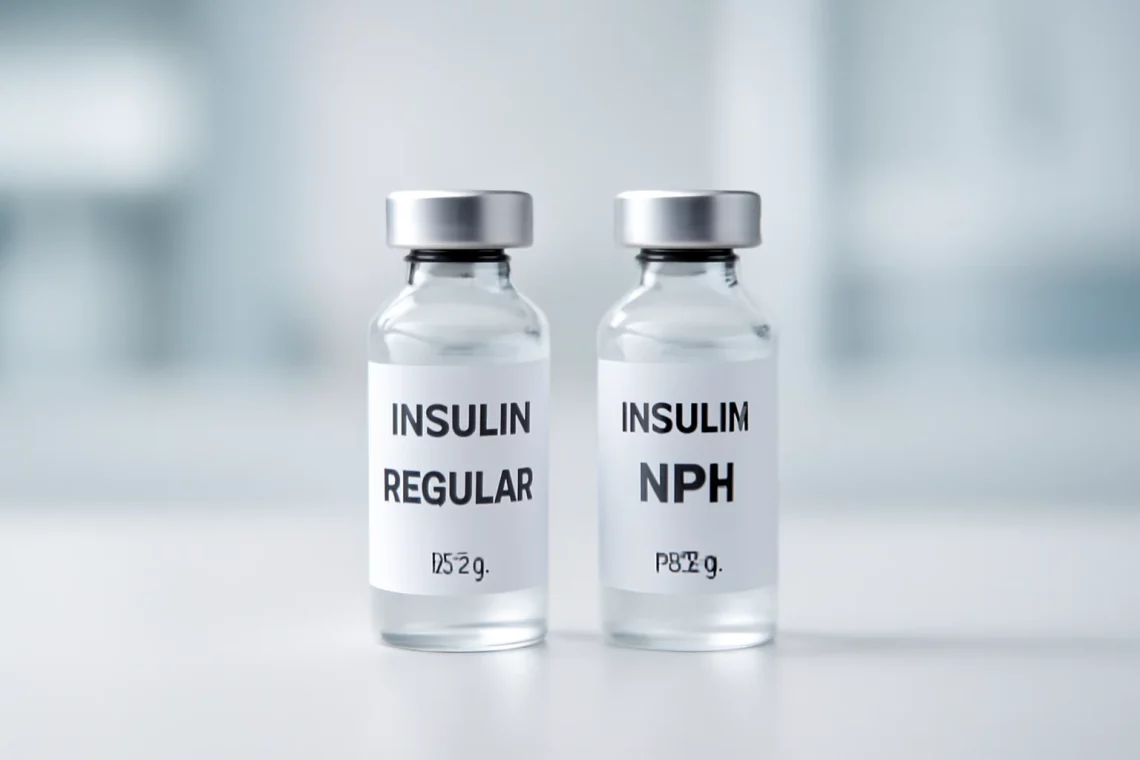
Choosing Between Regular Insulin and NPH Insulin for Diabetes Management
Insulin therapy plays a crucial role in managing diabetes, a condition that affects millions worldwide. Among the various types of insulin available, Regular insulin and NPH (Neutral Protamine Hagedorn) insulin are two of the most commonly used. Understanding the differences between these two types of insulin can empower patients and caregivers to make informed decisions about diabetes management.
Regular insulin, often referred to as short-acting insulin, is known for its quick onset of action. It’s typically used to control blood glucose levels around mealtimes, making it an essential component of many diabetes management plans. On the other hand, NPH insulin is an intermediate-acting insulin that provides a more prolonged effect, making it suitable for managing blood sugar levels throughout the day and night.
The choice between Regular and NPH insulin can significantly impact a patient’s daily routine, blood glucose control, and overall quality of life. Each type of insulin has its own unique characteristics, benefits, and potential drawbacks, which highlights the importance of understanding how they work and how they can be effectively integrated into a diabetes management plan.
Understanding Regular Insulin
Regular insulin is a synthetic form of human insulin that is widely used in diabetes management. Because of its rapid onset, typically within 30 minutes of administration, it is ideal for controlling postprandial (after meal) blood sugar levels. This is particularly beneficial for individuals who may need to manage spikes in blood glucose that occur after eating.
The mechanism of action for Regular insulin involves facilitating the uptake of glucose by cells, thereby lowering blood sugar levels. It binds to insulin receptors on the surface of cells, allowing glucose to be transported from the bloodstream into the cells where it can be utilized for energy. This action is crucial for individuals with diabetes, who may have impaired insulin production or insulin resistance.
Regular insulin can be administered via subcutaneous injection or through an insulin pump. Many patients prefer to use Regular insulin in conjunction with their meals to ensure optimal control of their blood sugar levels. It is important to note that the peak action of Regular insulin occurs approximately 2 to 3 hours after injection, which means careful timing is necessary to avoid hypoglycemia (low blood sugar) if meals are delayed.
While Regular insulin is effective for managing blood sugar, it does have some drawbacks. The need for multiple injections throughout the day can be cumbersome and may lead to variability in blood glucose levels. Moreover, individuals using Regular insulin must be diligent about monitoring their blood sugar levels to prevent episodes of hypoglycemia or hyperglycemia (high blood sugar).
In summary, Regular insulin is a vital tool in diabetes management, particularly for controlling blood sugar around mealtimes. Its rapid action and flexibility can empower users to respond effectively to their dietary choices, although it does require careful planning and monitoring.
Exploring NPH Insulin
NPH insulin, or Neutral Protamine Hagedorn insulin, is an intermediate-acting insulin that offers a different approach to blood sugar management compared to Regular insulin. The primary distinction lies in its duration of action and its onset time. NPH insulin typically begins to work within 1 to 3 hours after injection, peaks around 4 to 12 hours later, and continues to lower blood sugar levels for up to 18 hours.
This extended duration makes NPH insulin particularly suitable for individuals looking to manage their blood sugar levels throughout the day and night. Many patients find that NPH can provide a more stable level of insulin in their system, reducing the likelihood of both high and low blood sugar fluctuations.
NPH insulin is often used in combination with Regular insulin in a basal-bolus regimen, where the NPH acts as a basal insulin to cover the body’s insulin needs throughout the day, while Regular insulin is used for mealtime coverage. This combination can provide a more comprehensive management strategy for individuals with diabetes, allowing them to tailor their insulin usage to their lifestyle and dietary habits.
While NPH insulin can offer many benefits, it is not without its challenges. The variability in its peak action can sometimes lead to uncertainty, making it crucial for users to regularly monitor their blood glucose levels. Additionally, because NPH insulin is cloudy and requires gentle mixing before use, it might be less convenient for some individuals compared to the clear formulation of Regular insulin.
Overall, NPH insulin serves as a valuable option for individuals who require a longer-acting insulin to maintain stable blood sugar levels throughout the day. Its unique characteristics can complement other forms of insulin, providing flexibility in insulin regimens.
Comparing Regular Insulin and NPH Insulin
When comparing Regular insulin and NPH insulin, several key differences emerge that can significantly influence a patient’s diabetes management strategy. One of the most critical factors to consider is the onset and duration of action for each type of insulin.
Regular insulin is classified as a short-acting insulin, with its effects typically felt within 30 minutes and lasting around 6 to 8 hours. This makes it particularly effective for controlling blood sugar spikes that occur after meals. In contrast, NPH insulin acts more slowly, with a peak action that can last up to 12 hours and a total duration of action that can extend to 18 hours. This prolonged action can make NPH a better option for those who require longer-lasting blood sugar control.
Additionally, the manner in which these insulins are used can differ. Regular insulin is often used for mealtime coverage, injected shortly before eating to manage postprandial blood glucose levels. NPH insulin, on the other hand, is more commonly used as a basal insulin, providing a steady release of insulin throughout the day and night, which can be particularly helpful for those who experience fasting hyperglycemia.
Another important consideration is the potential for hypoglycemia. The rapid action of Regular insulin can lead to an increased risk of low blood sugar, particularly if meals are missed or delayed. In contrast, the slower onset of NPH insulin may offer a more gradual decline in blood sugar levels, potentially reducing the overall risk of hypoglycemic episodes.
Ultimately, the choice between Regular insulin and NPH insulin depends on individual preferences, lifestyle factors, and specific blood sugar management needs. Consulting with a healthcare provider is essential to determine the most appropriate insulin regimen based on personal circumstances and goals.
Factors to Consider When Choosing Insulin
When it comes to selecting the right type of insulin for diabetes management, several factors should be taken into account. First and foremost, individual lifestyle and daily routines play a crucial role in determining which insulin type may be most suitable. For example, individuals with a hectic schedule may prefer the flexibility of Regular insulin for mealtime dosing, while those seeking a more stable blood sugar level throughout the day may benefit from using NPH insulin.
Another important consideration is the patient’s blood glucose control history. Those who experience frequent spikes in blood sugar after meals may find Regular insulin to be an effective solution, whereas individuals who have difficulty maintaining consistent blood sugar levels may need the steadier profile of NPH insulin.
The potential side effects and risks associated with each type of insulin should also be carefully evaluated. Regular insulin, with its rapid action, carries a higher risk for hypoglycemia, particularly if meal timing is inconsistent. NPH insulin, while offering a more gradual insulin release, can still lead to hypoglycemia but may do so less frequently.
Finally, it is essential to consider the patient’s comfort level with insulin administration. Regular insulin requires precise timing and careful monitoring, while NPH insulin may necessitate mixing before use, which could be a barrier for some individuals. Understanding these nuances can empower patients to make informed decisions about their insulin therapy.
In conclusion, the choice between Regular and NPH insulin is not a one-size-fits-all decision. Each individual’s circumstances, preferences, and health goals should guide the selection of the most appropriate insulin regimen. Regular consultations with healthcare providers are vital to ensure effective diabetes management and optimal health outcomes.
**Disclaimer:** This article is for informational purposes only and does not constitute medical advice. Always consult a healthcare professional for medical concerns or before making any changes to your treatment plan.




